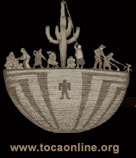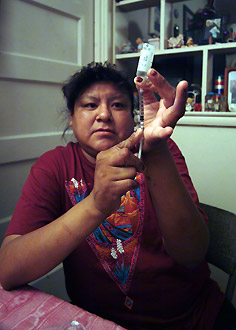

 |

|
 Tohono O'odham Community Action (TOCA) is a grass-roots organization working to reduce diabetes and improve the health of residents by encouraging ties to traditional culture. ARTICLES See resources related to this case study » Download lesson plan related to this case study: PDF or Word Type 2 diabetes is a debilitating illness with no known cure. Diabetics are 2-4 times more likely to develop heart disease or have a stroke, and 3 times more likely to die of complications from flu or pneumonia. Blindness, amputation and kidney failure are common in the late stages of illness, and among adults, diabetes is thought to reduce life expectancy by 5-10 years. For children who develop Type 2 diabetes by age 10 the disease shaves an estimated 19 years off their lifespan.  This epidemic coincides with the damning of the Gila and other rivers for upstream use by farmers and ultimately Phoenix. The diversion of water from the Pima destroyed their agriculture and livelihood, plunging them into poverty. Government researchers have studied diabetes in the O’odham peoples since 1965. Some suggest the O’odham may be genetically predisposed to diabetes, which, combined with a poor diet and lack of exercise, have led to high rates of the disease. But after countless studies and hundreds of millions of federal research dollars, they have yet to come up with any clear answers or solutions. Prevention and management strategies that encourage healthier choices have been ineffective, and diabetes rates across the nation continue to rise. What other factors might contribute to the development of diabetes? What other explanations might account for higher rates among people who are already burdened in so many other ways? What strategies might help those afflicted keep diabetes in check and prevent others from becoming diabetic themselves? |
|
|||
|